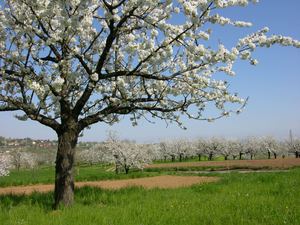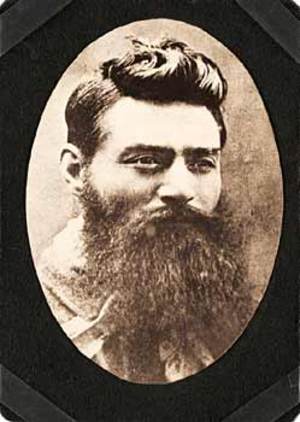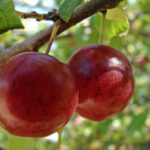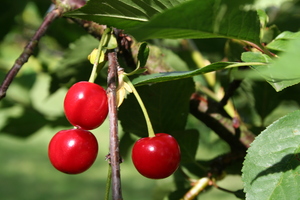Cherry trees, even when pruned well and kept in perfect condition, only live for about 20 years. Their delicate nature is one of many reasons to keep cherry trees pruned properly.
Why you Ned to Prune your Cherry Tree
Unpruned cherry trees produce smaller fruit and less fruit in general. Pruning your cherry tree keeps it a manageable size for harvesting cherries and helps minimize insects and disease. Pruning young cherry trees trains their branches to develop into good, well-spaced branches.
How to Prune a Cherry Tree – A General Overview
How often to prune: Cherry trees need to be pruned once every year.
How much to prune: Always prune as little as possible, especially if you are inexperienced and unsure how much to prune. You can always cut off more if necessary, but you can never undo extensive damage.
Pruning tools: All pruners can have either anvil blades (which are straight) or bypass blades (which are curved). Bypass blades cause less damage to stems left on the tree and are easier to handle. Hand pruners should be used for stems that are less than ¾ inches. Lopping shears are intended for branches up to 1 ¾ inches in diameter and have long handles. Pole pruners are blades mounted on poles. They are used to cut branches up to 2 inches wide. Chain saws should be used for branches thicker than 3 inches.
Pruning larger branches: Make a small wedge cut on the underside of the branch a few inches away from the branch stem. This will keep the bark from pulling off in strips when you cut further up the branch. Next, cut the branch off above that wedge cut. Lastly, cut the rest of the branch off at a 45 degree angle near where the branch stems out of the trunk. You will want to avoid cutting what is known as the “branch collar,” which is the area where the trunk swells where the branch grows out of it.
Pruning smaller branches and twigs: Cut at an angle approximately 1/8-inch above where the branch sprouts from the tree. Be sure to cut at an angle so that water will flow off of the cut. Otherwise, diseases may harbor there.
Root health: It is important to remove any weeds or plants that sprout up at the base of the cherry tree so that they don’t fight for the tree’s nutrients. It is best to dig such plants up carefully. If the plant cannot be dug up without disturbing the cherry tree’s roots, the plant should at least be cut down.
Understanding Your Cherry Tree
Cherry trees are central leader trees with one main truck, out of which the other branches grow. It is good to keep this main trunk well-maintained to encourage the growth of strong branches out of it.
Cherry trees sometimes develop clusters of branches that branch out at approximately the same level on the tree. Only one branch should be left to develop a strong scaffold at each level. Trim off the ones that appear weaker or aren’t growing at an optimum angle (45-60 degrees) away from the tree. Cherry trees should be pruned so that the main branches growing out of the leader trunk are spaced 8 to 12 inches apart for sweet cherry trees, and 6 to 8 inches apart for tart cherry trees.
On cherry trees, fruit tends to grow best on branches that are at least a year old, so it is a good idea to leave older (but undamaged branches) as much as possible in favor of trimming away newer ones. Trees that produce tart cherries require less pruning in general than trees that produce sweet cherries.
When to Prune a Cherry Tree
Cherry trees should be pruned in the early summer, after you have picked the cherries. This helps protect the delicate tree from harmful disease in the winter cold. Some commercial growers choose to begin pruning cherry trees in late winter or spring in order to ensure that they have enough time to prune all the trees, but home growers do better pruning their cherry trees later.
What to Remove when Pruning Cherry Trees
Cut off dead or damaged branches and wood, and any leaves that are discolored or damaged. Prune off any new branches as necessary to help maintain the desired shape of the tree, and any branches that are conflicting with other branches. If growth is too thick in a particular area, branches should be thinned out in that area to encourage ventilation and sunlight. Branches that are too close to the ground should also be cut off.
Things to Consider when Pruning Cherry Trees
Branches growing out of the main trunk should be encouraged to grow to the side (as opposed to upward) to give all of the branches more space and get more sunlight to the cherries. The way to encourage such growth on branches that are going too sharply upward but you do not wish to cut off, is to gently tie the branches down or weight them down.
Post-Pruning Habits
Always disinfect your pruning tools after using them to ensure that diseases aren’t spread to future trees. One part bleach to 9 parts water is a good cleaning solution for pruning tools. If you know that the tree you are pruning is diseased, it is wise to disinfect the pruning tool after each branch or leaf you cut. Cherry trees, unlike many other trees, need to have all pruning cuts sealed with pruning paste. Use non-asphalt pruning paste.
If you ever have specific questions about pruning, your local garden store should have knowledgeable professionals. To find information online, try searching the forums here or read more about cherry tree pruning here.







